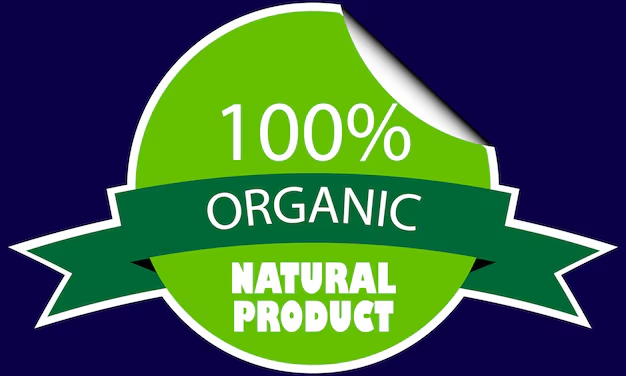Navigating the Use of Food Stamps: Can You Buy Vitamins with SNAP Benefits?
The Supplemental Nutrition Assistance Program (SNAP), commonly known as food stamps, is a vital resource for many families across the United States, helping them afford groceries and maintain a healthy diet. However, navigating what can and cannot be purchased with SNAP benefits can sometimes be challenging, especially when it comes to items like vitamins and supplements. This article will explore whether vitamins can be purchased with food stamps and offer insights into using SNAP benefits effectively.
Understanding SNAP Benefits
Before diving into the specifics of purchasing vitamins, it's important to grasp what SNAP benefits are designed for. SNAP is a federal program aimed at assisting low-income individuals and families by supplementing their food budget to afford healthier food choices. The benefits are issued on an Electronic Benefits Transfer (EBT) card, which functions like a debit card at authorized retailers.
Eligible Purchases with SNAP
SNAP benefits primarily cover food items. Here's a basic overview of what typically qualifies:
- Fruits and vegetables
- Meat, poultry, and fish
- Dairy products
- Breads and cereals
- Snack foods
- Non-alcoholic beverages
However, SNAP benefits do not cover all food-related items. For instance, prepared foods that are hot at the point of sale, alcoholic beverages, and tobacco products are excluded.
Can You Buy Vitamins with Food Stamps?
The short and definitive answer to whether you can buy vitamins with food stamps is no. SNAP benefits do not cover vitamins and supplements, which is often a point of confusion for beneficiaries.
Why Vitamins Aren’t Covered
The main reason vitamins and supplements are excluded under SNAP is because they are categorized as non-food items. SNAP is specifically designed to enhance the food purchasing power of beneficiaries. Since vitamins are not classified as food, they fall outside the range of eligible items.
Understanding the Policy
The restriction on vitamins is rooted in the broader aim of SNAP to encourage the purchase of essential food items rather than supplements. The program's guidelines aim to ensure that the nutritional needs of participants are met through a balanced diet consisting of actual food products rather than supplements.
Alternatives and Solutions
Even though vitamins themselves cannot be purchased with SNAP benefits, there's room to strategize so that the nutritional needs of your household are still met.
Focus on Nutrient-Dense Foods
An effective approach is to maximize the nutritional content of the foods you can buy with SNAP benefits. Here's how:
- Prioritize whole foods: Fresh fruits and vegetables, whole grains, lean proteins, and dairy products provide a base for a nutrient-rich diet.
- Shop smart: Look for sales and discounts on whole foods and buy in bulk when possible.
- Meal planning: Plan meals around seasonal produce, which tends to be more affordable and contain higher nutrient levels.
Explore Community Resources
Another way to complement your SNAP benefits is by tapping into community resources for additional nutrition support:
- Food banks and pantries: They may offer vitamins and supplements occasionally.
- Nutrition programs: Some community centers and non-profits run classes or programs that provide both education and additional food resources.
Seek Assistance
Healthcare providers or dietitians can provide personalized advice on how to meet your nutritional needs without the use of supplements. They might suggest specific food items that can provide similar benefits to common vitamin supplements.
Navigating Snap Benefits: Practical Tips
Understanding how to use SNAP benefits effectively can be empowering. Here’s a quick guide to help you navigate SNAP rules:
👜 Shopping Tips with SNAP Benefits
- Check for eligible stores: Use your EBT card at SNAP-authorized retailers.
- Look for SNAP deals: Many stores highlight SNAP-eligible items; take advantage of these promotions.
- Balance your purchases: Focus on buying a diverse range of food items to ensure a balanced diet.
📋 Non-SNAP Solutions
- Explore WIC program: If eligible, this program might cover some nutritional supplements.
- Local markets: Some farmers' markets accept EBT, offering fresh, organic produce at lower prices.
🔍 Additional Resources
- Classes and Workshops: Many community centers offer free classes on budgeting and meal planning for SNAP recipients.
The Importance of Understanding SNAP Regulations
Fully understanding what can and can't be bought with SNAP benefits helps users optimize their resources, ensuring they receive the greatest benefit from the program. While vitamins and supplements aren't covered, through strategic shopping and community resources, individuals can maintain a nutrient-rich diet.
The Bigger Picture
The conversation around SNAP’s exclusions, like vitamins, opens up a broader dialogue about food security and nutritional adequacy. While SNAP is crucial in reducing hunger, addressing the comprehensive nutritional needs of participants is a continuous challenge, highlighting the need for integrated approaches combining governmental aid, community support, and individual strategies.
Key Takeaways:
- Vitamins are not eligible for purchase with SNAP benefits; they are considered non-food items.
- Focus on nutrient-dense foods to meet dietary needs effectively with available SNAP funds.
- Utilize additional community resources, such as food banks and nutrition programs, for supplemental support.
- Engage in smart shopping practices to stretch your benefits further.
By understanding and leveraging the rules and resources associated with SNAP, beneficiaries can make informed decisions that help support their dietary health without out-of-pocket expenditure on non-covered items like vitamins.

Related Topics
- Am I Eligible For Food Stamps
- Are Food Stamps Being Cut
- Are Food Stamps Federal Or State
- Are Food Stamps Frozen
- Are Food Stamps Funded By Taxpayers
- Are Food Stamps Going Away
- Are Food Stamps Income Limits
- Are Food Stamps Paused
- Are Illegal Aliens Eligible For Food Stamps
- Are Illegal Immigrants Eligible For Food Stamps